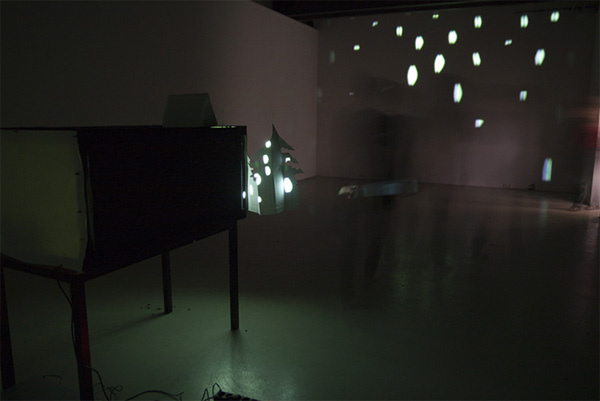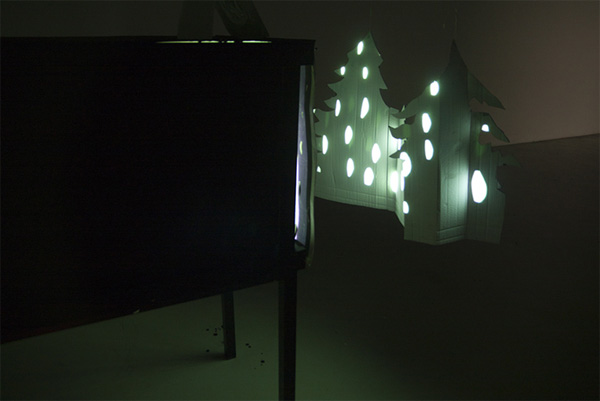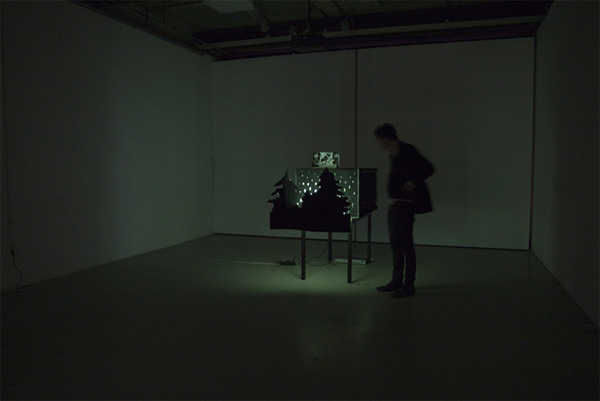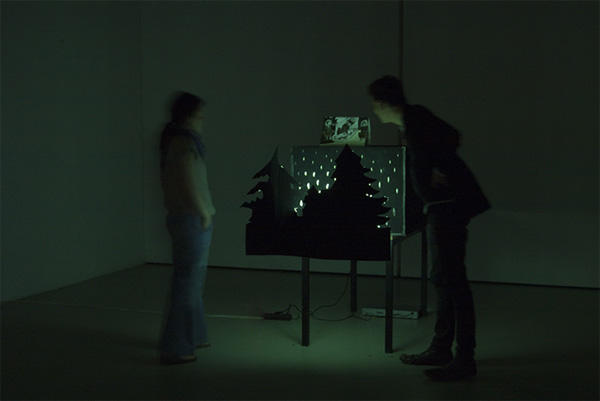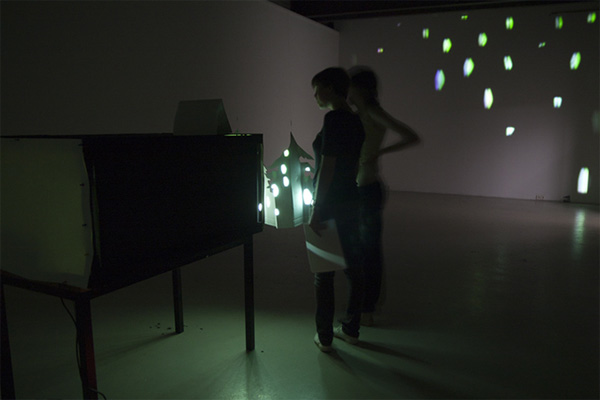
GTBT Start Introduction Itinary Outro

Through its title Amanda Koelman's exhibition referred to a legendary work by Brion Gysin, the Dreamachine (originally 1958), a stroboscopic flicker device that produces visual stimuli. In fact this work was the result of a cooperation by Brion Gysin, engineer Ian Summerville, and writer William Burroughs known for his cut-up technique of text and from the context of drugs and psychedelia. Gyons's work has many interesting facets, one of them is that anyone can make his/own Dreamachine: take a paper, fold it into a conic shape, cut in it a pattern of holes, insert a light bulb, and put the resulting object on a record player. The second facet is that anyone can make his own artwork, sitting with eyes closed close to the light of the device, through the visual stimuli as they are perceived by the inner eye.
The Dutch artist made her DreaMMachine to speak of her experience of the trip. The core of her exhibition was the projection of a video with impressions of the landscapes and human activity at train stations as recorded by her on the Trans-Siberian Express. This projection however only could be seen in the form of an abstract and minimalistic pattern of colour dots that, cast through the holes of a black box, popped up and faded away. This work spoke of a handicap. While on the train, all of us saw landscapes and stations and human activity but physically all of this mostly stayed remote, even while we were stopping at stations where we often could only spend a short while. So where did this leave us?
And so it was as if this exhibition brought up a basic question, namely to what extent we can, and cannot believe in the images that come to us. As an answer it suggested that, whatever the character of the journey that we make in the outside world, to make sense of it we always need to travel to the inside.
